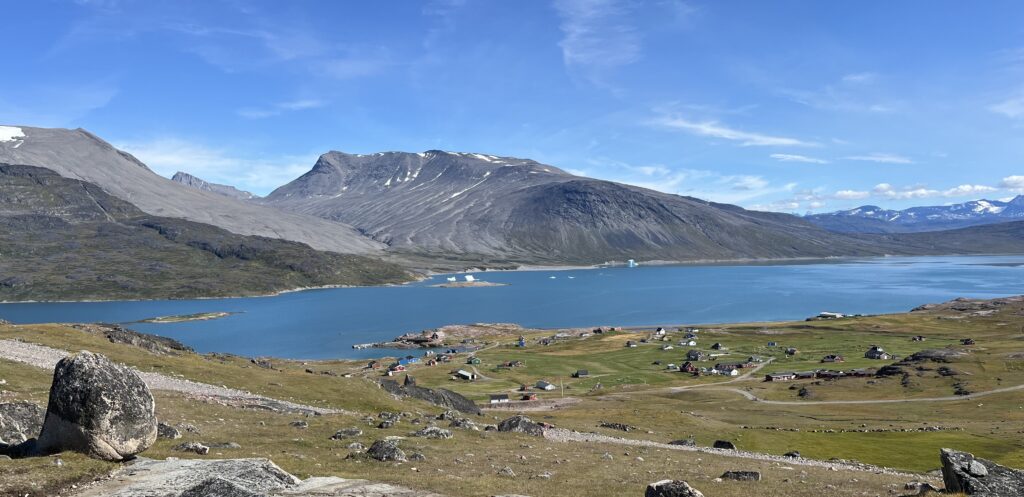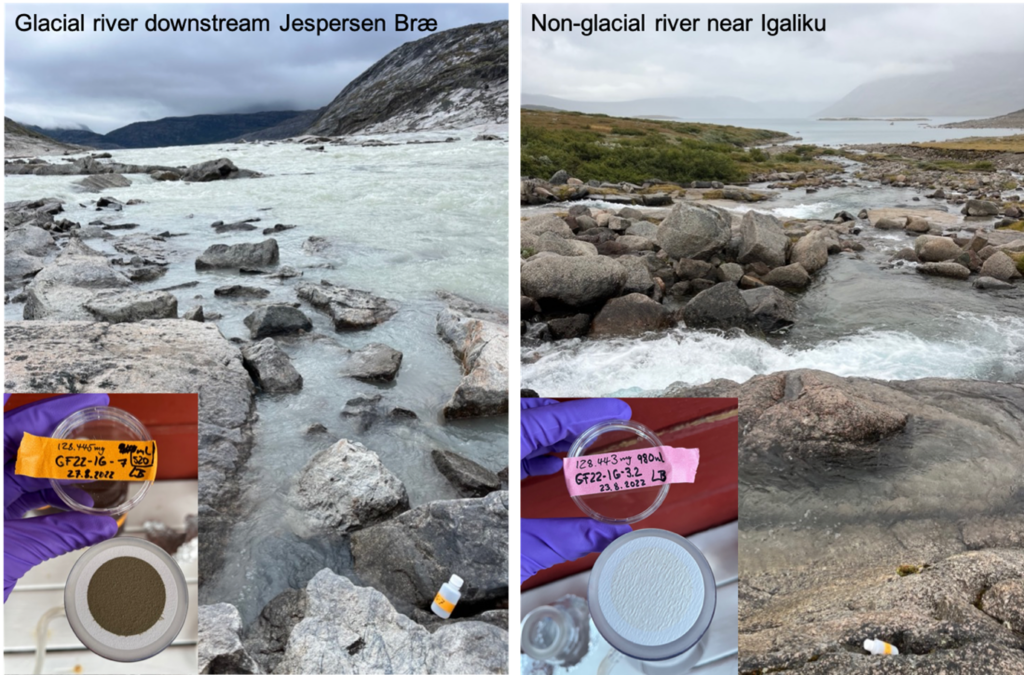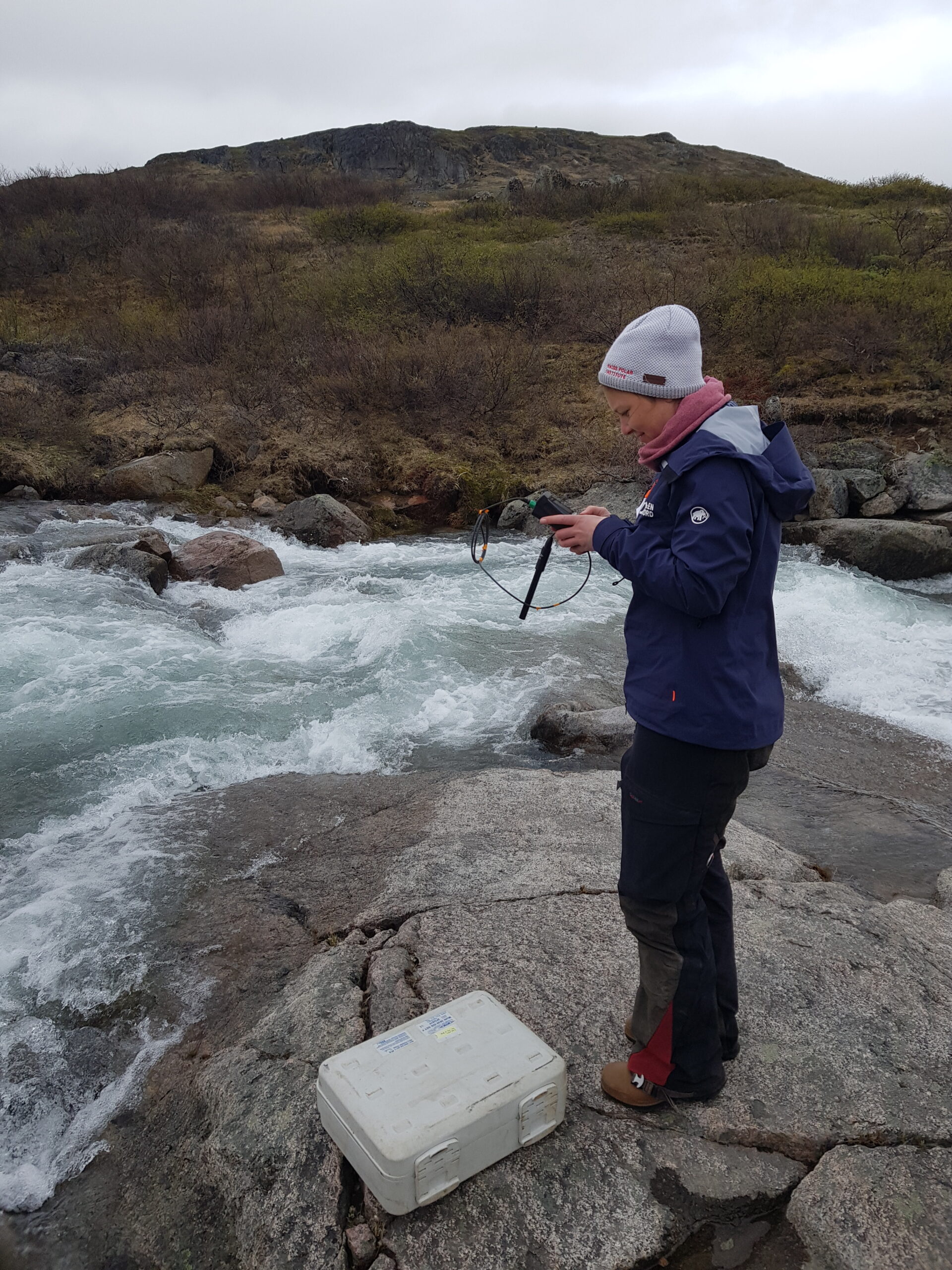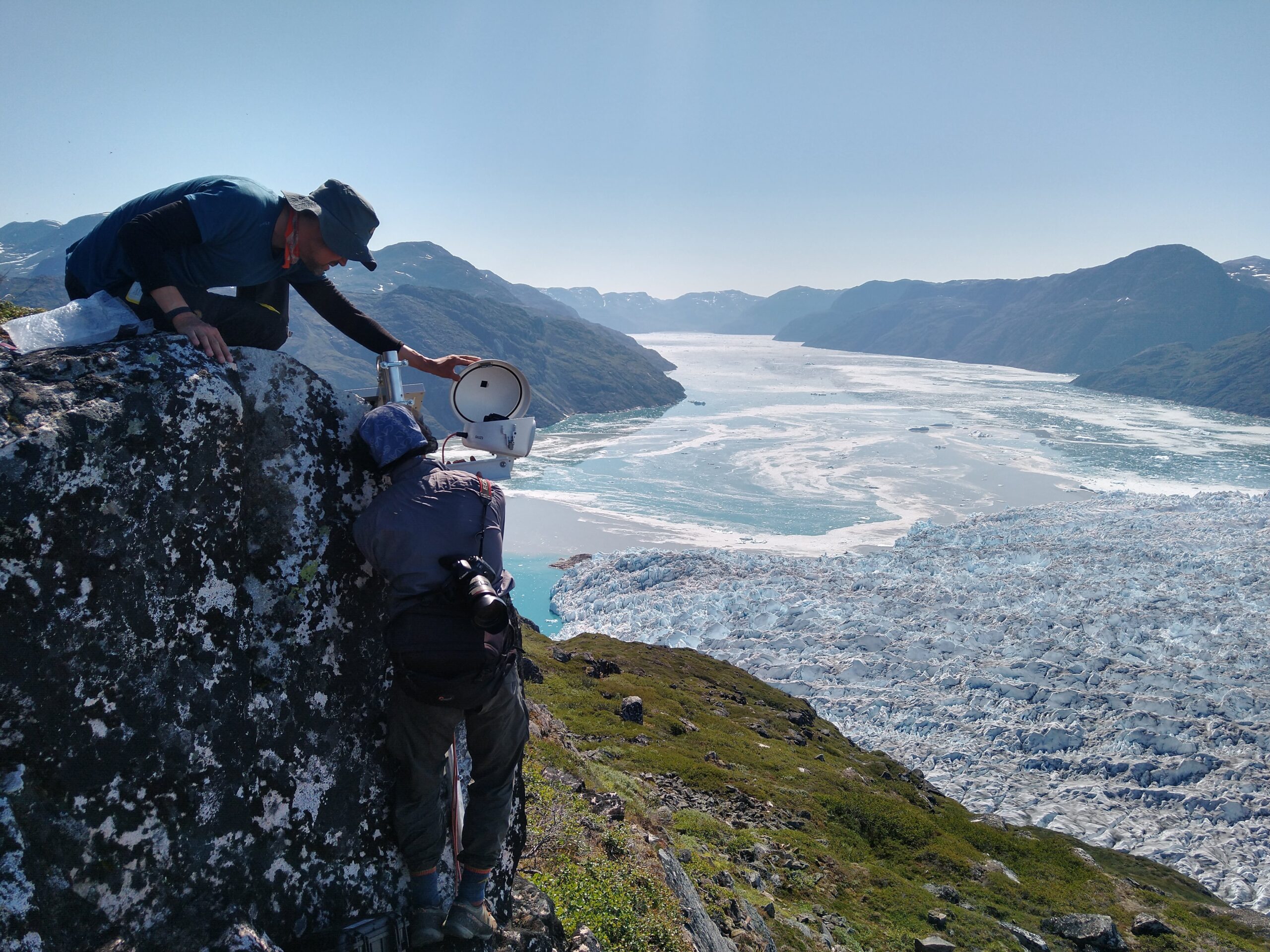A first scouting trip for the Land Cluster of the GreenFjord Flagship – Lisa Bröder
How are fjord ecosystems impacted by glacial runoff? Does glacial flower promote carbon burial? And how will the delivery of nutrients and organic matter respond to ongoing environmental changes? These are some of the questions the land cluster aims to address within the framework of the GreenFjord Flagship.
In order to get a first impression of our study area in Southwest Greenland and to plan next years’ campaigns, we conducted a short reconnaissance expedition together with members of the Atmosphere, Human and Biodiversity clusters in August 2022. Read more about that first field campaign and the challenging logistics in this News Item.
The main focus of the Land cluster for the coming years will be on Igaliku fjord, which receives meltwater from Jespersen Bræ and Sermeq Kangilleq, two land-terminating glaciers, and a number of nonglacial streams. Igaliku is a small village of about 20 inhabitants that is popular with tourists for its Norse ruins, dating back to the 12th century.

Here, we could set up a small laboratory on the porch of the guest house, to filter all collected water samples upon return – with a very nice view.

Within one week, we collected samples from a handful of nonglacial streams that could be reached on foot, as well as the main glacial outflow across the fjord by boat. Easily visible by the naked eye, glacial and nonglacial streams are distinctly different in the sediment load they carry: glacial streams appear milky (yet sediments collected on a filter are rather dark brown-grey), whereas nonglacial streams in the area are very clear (and don’t leave much visible traces on the filter). Characterizing the mineral and organic matter composition of these sediments together with their dissolved counterparts is now a task for the more sophisticated laboratories back in Switzerland.

Lisa Bröder is a research scientist in the Biogeoscience group at ETH Zürich. Her work focuses on land-to-ocean transfer of organic matter using a variety of biogeochemical tracers as well as isotopes. She is the PI of the Land cluster in the GreenFjord project.



